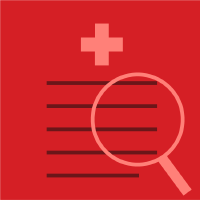Topic Menu
► Topic MenuTopic Editors

2. Department of Pathophysiology, Sechenov First Moscow State Medical University, Moscow, Russia

Thrombosis: From Basic Mechanisms to Saving Lives
Topic Information
Dear Colleagues,
Thrombosis underlies multiple diseases which are among the main causes of death worldwide. For example, thrombosis is a central mechanism for pathologies such as myocardial infarction/heart attack, ischemic stroke, deep vein thrombosis, as well as many others. Pathways leading to thrombus development in both arteries and veins present their own characteristics but are incompletely understood. On the other hand, modern methods of antithrombotic therapy have certain disadvantages, including insufficient efficacy or bleeding complications. In the present Special Issue, we intend to discuss both fundamental and clinical aspects of various types of thrombosis, novel methods and perspectives of thrombosis prevention, as well as new approaches to diagnosis of thrombosis-based diseases. We cordially invite all basic researchers and physicians to submit their original studies or reviews to this Special Issue and hope that this will give a great opportunity to share knowledge and discuss different facets of this life-threatening process.
Prof. Dr. Alexander Brill
Dr. Isabelle I. Salles-Crawley
Topic Editors
Keywords
- thrombosis
- deep vein thrombosis
- pulmonary embolism
- arterial thrombosis
- platelets
- neutrophils, NETs and thrombosis
- blood coagulation
- myocardial infarction
- ischemic stroke
- mechanisms
- diagnostics
- treatment
- tissue factor
- cancer and thrombosis
Participating Journals
| Journal Name | Impact Factor | CiteScore | Launched Year | First Decision (median) | APC |
|---|---|---|---|---|---|

Biomedicines
|
4.7 | 3.7 | 2013 | 15.4 Days | CHF 2600 |

Diagnostics
|
3.6 | 3.6 | 2011 | 20.7 Days | CHF 2600 |

International Journal of Molecular Sciences
|
5.6 | 7.8 | 2000 | 16.3 Days | CHF 2900 |

International Journal of Translational Medicine
|
- | - | 2021 | 14.2 Days | CHF 1000 |

Reports
|
0.9 | - | 2018 | 20.6 Days | CHF 1400 |

MDPI Topics is cooperating with Preprints.org and has built a direct connection between MDPI journals and Preprints.org. Authors are encouraged to enjoy the benefits by posting a preprint at Preprints.org prior to publication:
- Immediately share your ideas ahead of publication and establish your research priority;
- Protect your idea from being stolen with this time-stamped preprint article;
- Enhance the exposure and impact of your research;
- Receive feedback from your peers in advance;
- Have it indexed in Web of Science (Preprint Citation Index), Google Scholar, Crossref, SHARE, PrePubMed, Scilit and Europe PMC.

